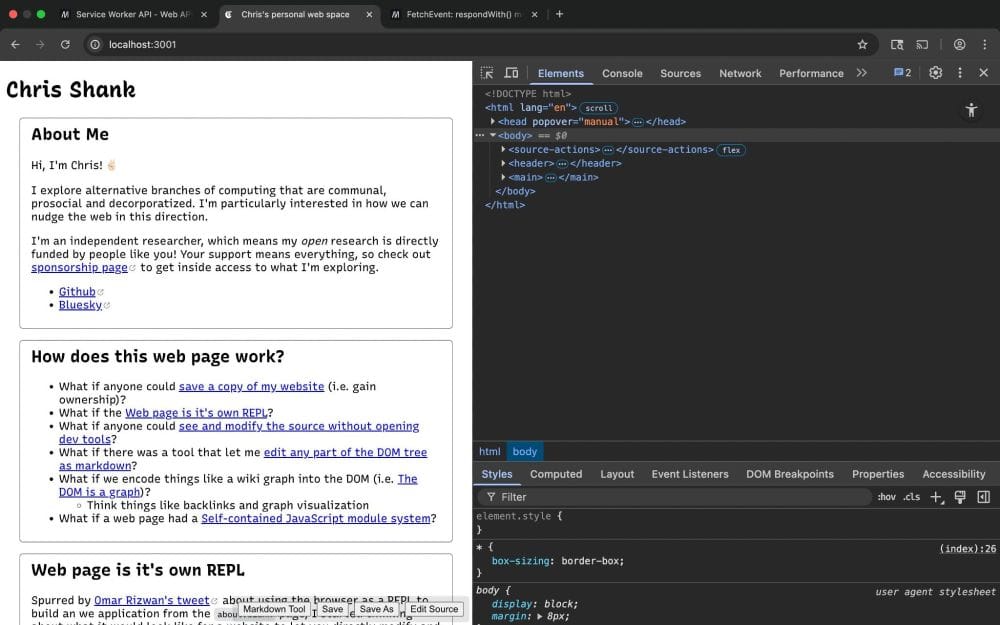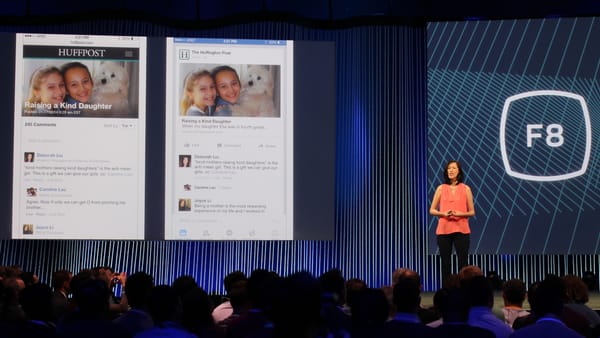WTN #3: XSLT Heat, Cool Fedi Apps, Web UIs in Agents
Welcome to Web Technology News (WTN), my weekly newsletter tracking what's next on the web. As usual, I'm using the following three categories:
- Web platform
- Open social web
- Web + AI
Web Platform
"Should we remove XSLT from the web platform?" That question was asked by Google engineer Mason Freed on the WHATWG GitHub account a few weeks ago. "Its role within the web browser has been largely superseded by JavaScript-based technologies such as JSON+React," explained Freed, adding that it's now a big security risk in browsers.
Judging by the comments, one of the primary uses of XSLT (Extensible Stylesheet Language Transformations) is for "displaying RSS feeds pleasantly." Another commenter added that "XSLT is extensively used by podcast hosting companies to beautify their raw feeds." The discussion around this got heated, so the thread was locked to non-collaborators. A second thread also got locked.
In other news, Mozilla has launched a new front end for MDN: "We've intentionally targeted Baseline "Widely available" features when deciding on which ones to use, and polyfilling or progressively enhancing when using anything Baseline "Newly available"."
Staying with Mozilla, its newly hired Web Dev Relations Lead, Jake Archibald, took to Mastodon to promote Firefox v142. I like the video explanations.
Let's get crazy now... I stumbled upon a couple of 'out there' ideas this week.
Hyperclay is a new product pitching itself as "Google Docs for interactive code." The site further explains:
"What if web apps were as simple to edit as documents? Hyperclay makes it possible: UI, logic, and data live in one self-modifying HTML file."
There's an excellent discussion about this on Hacker News. Hyperclay's developer, panphora, has also created a Markdown editor called Overtype.
I liked this web dev head-mash by Chris Shank: "This may look like my personal website, but it's not served via a traditional web server. Rather it's served from a service worker that proxies all network requests to a locally cloned git repository (stored in-browser)!"

Open Social Web
It's great to see Bluesky starting to have alternative servers (i.e. ones not owned and run by the Bluesky company). As reported by Laurens Hof in his Connected Places blog:
"Blacksky is taking further steps towards their own community platform within the ATmosphere, and have started inviting community members on their own Blacksky PDS servers. Blacksky has their own PDS migration tooling, Tektike, to help users transfer their account to a new PDS."
On the fedi side of the open social pond, Sean Tilley has written a roundup of the recent FediCon event in Canada. I was pleased to see this note from Sean:
"...there's some legitimately interesting developments happening with paying server admins, artists, and developers. I've written a bit about what Bandwagon and CrowdBucks are doing, and hopeful some collaboration can emerge between projects."
CrowdBucks is fairly new to me, but the following thread told me that Charles Iliya Krempeaux — a.k.a. reiver — is behind it (Charles also organized FediCon and is an active fediverse developer).
Another cool-sounding open web app I came across this week:
In Mastodon news, quote-posts are officially coming:
Finally in this section, you might be interested in my blog post this week outlining my experiences with Ghost, Substack, Eleventy and WordPress. I focus in particular on Ghost's federation (I use Ghost to publish this newsletter).
Web + AI
Vercel is proposing a convention to include instructions to an LLM directly in HTML responses as <script type="text/llms.txt">. But standards be damned...in classic 'Marc Andreessen and the <img> tag' fashion, Vercel encourages its users to just go ahead and do it anyway: "[it] doesn't need to be a formal standard. You can just start using it now."
For my post on The New Stack this week, I interviewed the two creators of MCP-UI, an open source project that creates React or web components for agents. The technology is just 3 months old, but is already being used by Shopify and others. One of the founders, Ido Salomon, explained to me why it's using the HTML <iframe> element to ferry UI components to agents:
"I think MCP-UI, at its core, is fairly simple. It basically takes the building blocks of MCP [the parent protocol] — MCP has a way to respond not just with text, but with an embedded resource that can be anything. So the idea was, how do I take something like an embedded resource, get some consensus around when this embedded resource contains something. Then the host — you know, ChatGPT, whatever — can render it. And how does it run basically arbitrary code, that is unsafe, without harming the users. Iframe is kind of the only way to do that. And sandbox iframe in particular gives you an extra edge."
Web UIs in agents — it's a trend to watch. I have another post coming up early next week about MCP-UI, based on an interview with two Shopify engineers.
Meanwhile, Paul Kinlan from Google is calling for experimentation with hyperlinks in the AI age:
"LLMs also offer the practical tools to finally realize the promise of hypertext on the web itself. They are the enabling technology that can upgrade the humble <a> tag and make it truly “hyper.”"
Launched this week: Tidewave Web for Rails and Phoenix, "a coding agent that runs directly in the browser alongside your web application, in your own development environment, with full page and code context." (via Hacker News)
One More Thing
What's the point of vibe coding if...
Thanks for reading, and if you have any suggestions on news sources for Web Technology News, leave me a comment on Mastodon or Bluesky. And don't forget, you can follow WTN on those platforms too: search "@feed@webtechnology.news" on Mastodon or click here to follow on Bluesky.
You can also get the full content via email (the form is on the WTN homepage) or RSS. A benefit of signing up via email is that it allows you to post good ol' fashioned comments on the URL where this post lives: i.e. on the Web.
Until next week, keep on surfing!



